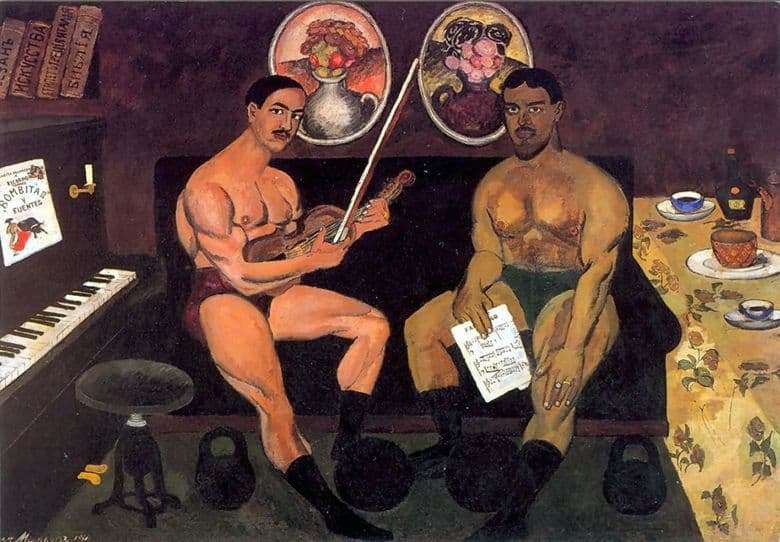
Pyotr Konchalovsky belongs to unsurpassed masters in terms of writing still lifes, one of his best works can be without a twinge of conscience a still life called “Dry Paints”, made in an unsurpassed manner of liveliness of writing and color.
The style of writing resembles something between cubism and fauvism, since the artist was an ardent admirer of both of these areas in painting in the early stages of his career.
The main part of the picture is occupied by a table with objects of the ordinary use of the artist and the creator of scenery located on it: a watering can, flasks and bottles containing paints and glue, various jars, pipettes and the like. Behind all this variety stands a huge jug with large tassels and a flask with something pink resembling diluted paint. The background of the painting is a blue cloth, most likely a curtain.
The artist with great care painted all the details of the wooden table, every crack and gyrus in the board, knots and the slightest curvature, but leaves the silhouette of the still life itself somewhat vague and even blurry, cones and bottles lose their characteristic clarity, as if dissolving in those colors for the storage of which they are intended. The picture is literally filled with different colors – blue, yellow, green, red, brown and even black. The author uses almost all possible variations of colors, thereby creating not just a still life, but a rainbow of different color shades.
What could be simpler than drawing your own workplace, but it was done really well with great love and expertise. Created canvas in 1912, was kept in a private collection, and after it was transferred to the Tretyakov Gallery of Moscow, where it is located today.
Description of the painting by Peter Konchalovsky “Dry paints”







